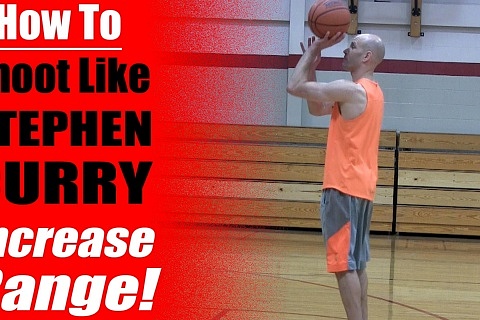Home »
Misc »
How to break a trap in basketball
How to break a trap in basketball
Trap Defense in Basketball : Basic Concepts and Examples
Table of Contents
What is trap defense in basketball
Trap defense is a basketball defensive tactic in which two defenders will effectively double team an offensive player with the ball, typically near a sideline and/or corner of the court.
The primary purpose of implementing a trap defense is to cause turnovers, which in turn, could diminish scoring opportunities for the offensive team.
What are advantages of trap defense
One advantage of trap defense is that it can cause the offensive team in general, and more specifically, the player with the ball to make quicker decisions than usual. This could lead to turnovers such as defensive interceptions via bad passes.
Another advantage of the trap defense is that it could be utilized as a method of the defensive team generating points, primarily via transition offense.
This could be very beneficial for defensive teams that cannot shoot very well from the perimeter because those teams could score via transition layups from the offensive turnovers.![]()
What are disadvantages of trap defense
One disadvantage of trap defense is that in many instances, at least one offensive player would always be open to receive the ball from the player caught in the trap.
So, if that trapped player has the skill and capability to pass out of the trap, then the offensive teammate receiving the ball would have the opportunity to score or make plays for other teammates.
Another disadvantage is that the middle area within the trap defense could become vulnerable, particularly if a non-trap defender does not cover that space on the court.
For example, if an offensive player with the ball gets trapped near the sideline or corner, that same player could potentially break the trap by quickly passing the ball to another teammate in the middle of the court.
What are general concepts to consider for trap defense
Navigate the ball handler towards a sideline/corner
During the initial phases of the trap sequence, one of the defenders, particularly at the front of the trap should navigate (or push) the ball handler towards a sideline or corner.
When this occurs, the trap could be set more effectively and the defense would be able to use the sideline/corner as another defender.
Protect the middle
As mentioned previously, if the trapped player can pass the ball into the middle of the trap, then this could cause a defensive breakdown which could lead to easy scoring opportunities for the offensive team.
Therefore, when the defender at the front of the trap pushes the ball handler towards a sideline/corner, another defender, particularly on the weak side of the court, should slide into the middle space of the trap defense to deny and/or prevent a pass into that area.
Have active hands when setting the trap but do not foul
When an offensive player gets caught in the trap, the two trap defenders should not reach in to steal the ball or make any other unnecessary foul.
Instead, the two defenders should simply have active hands which mirror the hands of the trapped player with the ball.
For example, if the trapped player tries to execute an overhead pass to another teammate, then the trap defenders should have high hands above the shoulders and/or head.
Likewise, if the trapped player attempts to execute a bounce pass to another teammate, then the trap defenders should have lower hands below the waist near the legs.
By having active hands, the trap defenders could either deflect the ball so that another teammate could intercept it or one of the trap defenders could intercept the ball themselves.
Also, in some instances, the trapped player could potentially panic and throw a bad pass out of bounds because that player could not see any available teammates due to the active hands of the trap defenders.
What are the different types of trap defense
There are three primary types of trap defenses and they are known as the full court trap, the half court trap, and the zone trap. Other alternative types of traps could include baseline traps or ball screen traps.
Full Court Trap
The full court trap, also known as the full court press, seeks to trap the ball, preferably in the backcourt, and cause turnovers which could lead to easy scoring opportunities via transition layups.
The full court trap is essentially the most aggressive and riskiest variation of the three types of traps.
Half Court Trap
The half court trap emphasizes some defensive pressure and traps, primarily near the half court corners of the court which could lead to turnovers and transition layups.
The half court trap is somewhat aggressive, particularly with the on-ball defender near the front of the trap. However, it is not as aggressive and risky as the full court trap.
Zone Trap
The zone trap primarily focuses on protecting the basket and influencing jump shots via the zone defense. The traps are typically set near the wing sideline area or in the corners by the baseline. However, it is also possible to set extended traps at the top.
The zone trap is more reserved than the full court or half court trap variations because it places a greater emphasis on the zone defense principles.
Although this does not mean that setting traps to create turnovers are not a factor. It is just that they are probably not as important as with the full court or half court traps.
Baseline Trap
The baseline trap typically occurs when the ball handler dribbles the ball towards the baseline when there are two or more defenders adjacent to each other on that side of the court.
A good time to generally implement the baseline trap is when the ball handler beat their defender with the dribble and begins to drive baseline towards the basket.
A help defender, usually a low post player could contain (assuming the other weak side defenders are able to rotate correctly) until the ball handler’s defender catches up from behind.
Afterwards, the help defender and the original defender could set the trap near the baseline.
Ball Screen Trap
The ball screen trap could be implemented as a defensive counter to an offensive team’s on-ball screens, particularly near the top or the wings.
The ball screen trap typically occurs when the screener’s defender executes a type of hard hedge that pushes the ball handler towards the sideline while the ball handler’s defender fights through the screen and chases from behind.
Once the ball handler’s defender catches up to the ball handler, both defenders trap the ball and take away potential passes with active hands.
Additionally, any strong side defenders should execute deny defense while weak side defenders rotate into proper help positions.
Related: Trapping The Ball Screen – YouTube
Affiliate Disclosure : I may earn a commission on qualifying purchases made through the links below.
What are simple examples of trap defense
1-2-1-1 Full Court Trap Example – Part 1
This is a simplified example of the 1-2-1-1 full court trap, also known as the 1-2-1-1 full court press. 1 receives the ball from 4 and when that occurs, X4 begins to push 1 towards a sideline.
1 receives the ball from 4 and when that occurs, X4 begins to push 1 towards a sideline.
At the same time, X3 cuts off the pathway from the middle to keep 1 near the sideline. Also, X1 cuts over towards the sideline and X2 cuts over towards the free throw line area near the high post.
1-2-1-1 Full Court Trap Example – Part 2
At this point, X3 and X4 have successfully trapped 1 near the sideline. Also, 2 and 3 are added to the example for demonstration purposes.
X1 splits the difference between 2 and 3 and can intercept the ball if 3 is the receiving target from 1. At the same time, X2 could intercept the ball if 2 is the receiving target from 1.
1-2-2 Half Court Trap Example – Part 1
This is a simplified example of the 1-2-2 half court trap. 1 begins to dribble towards the frontcourt after receiving the ball from 4. However, as that happens, X1 begins to push 1 towards the sideline.
At the same time, X3 slides up to initiate the trap while X2 slides over to cover the middle of the court.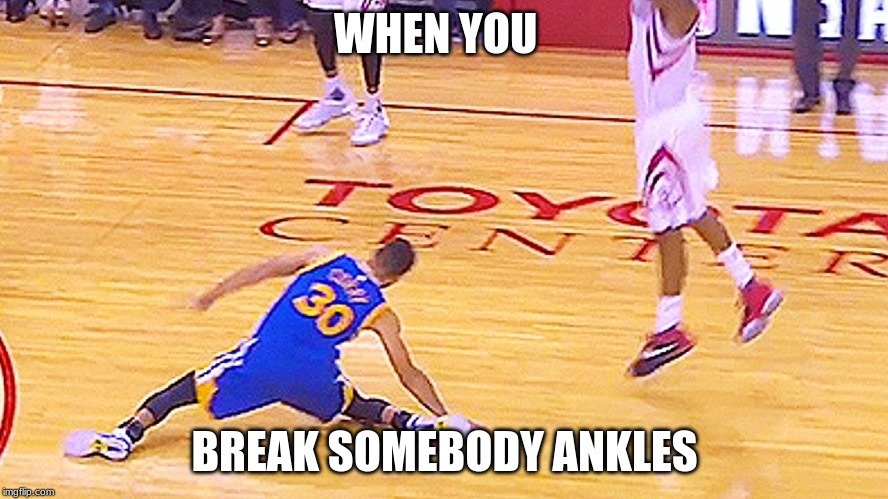 X4 also slides over towards the sideline while X5 slides over to the free throw line area near the high post.
X4 also slides over towards the sideline while X5 slides over to the free throw line area near the high post.
Additionally, X5 could also drop back towards the basket, shown with the gray arrow if one or more offensive players move towards the corners or low post areas.
1-2-2 Half Court Trap Example – Part 2
At this point, X1 and X3 have successfully trapped 1 near the corner. Ideally, the trap should be set in the frontcourt corner. That way, 1 cannot reverse the ball to 4 as that would be a backcourt violation.
Also, X2 covers the middle and could deflect or intercept the ball if 2 is the receiving target. Similarly, X4 covers the sideline and could deflect or intercept the ball if 3 is the receiving target.
Additionally, X5 drops back to protect the basket as 5 cuts to the low post block below the free throw line area.
1-3-1 Zone Trap Example – Part 1
This is an example of the 1-3-1 zone trap defense when the ball is at the top.
To start, X3 should apply on-ball defensive pressure while X2 and X4 cover the wing areas. Also, X5 covers the high post area and X1 stays near the back of the zone.
1-3-1 Zone Trap Example – Part 2
This is an example of the 1-3-1 trap zone defense when the ball gets passed to the wing and there is also an empty strong side corner.
When that occurs, X1 and X3 could trap the ball handler near the wing to either cause a potential turnover or to influence ball reversal back towards the top.
At the same time, X5 drops back to cover the low post area while X3 drops back to cover the free throw area near the high post. X4 also drops back near the mid-post area to watch for any weak side offensive action.
1-3-1 Zone Trap Example – Part 3
This is an example of the 1-3-1 trap zone when the ball gets passed to the corner. When that occurs, X1 and X2 could trap the ball handler near the corner while X5 continues to cover the low post area.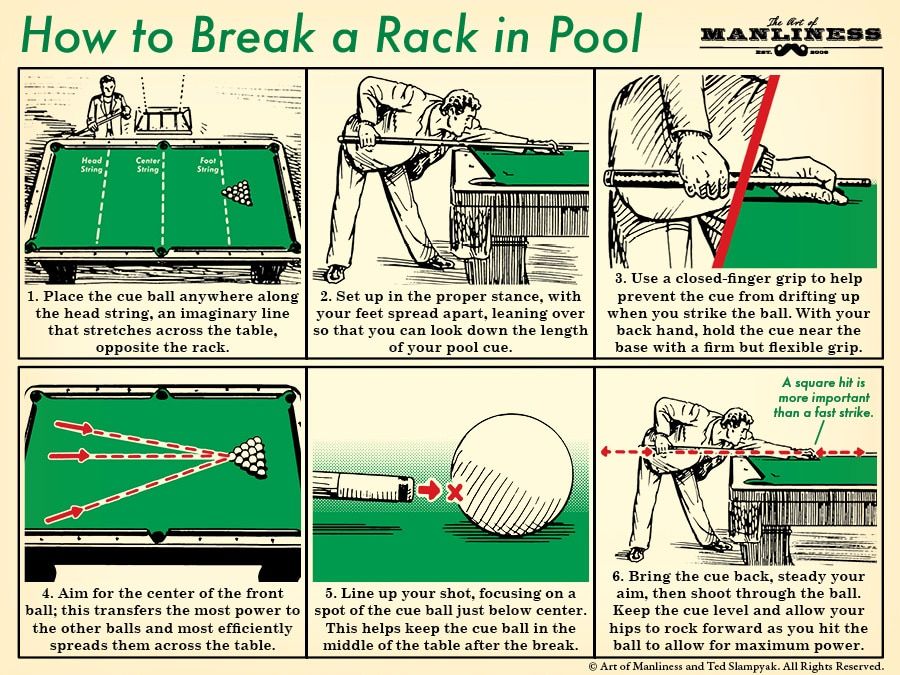
Additionally, if 2 receives the ball from 3, then X3 could temporarily stunt at the ball by with a closeout towards the right side wing.
Furthermore, X4 could temporarily step into the lane to provide extra lane protection to mitigate potential cutting by 1 at the top or 4 on the weak side.
Once X2 recovers back to the right side wing wing area, X3 would return back to the free throw area near the high post and X4 would return to the weak side mid-post area. These alternative actions are represented by gray arrows on the diagram.
1-3-1 Zone Trap Example – Part 4
This is an example of the 1-3-1 trap zone defense if the ball handler in the corner executes dribble penetration towards the baseline. When that occurs, X5 could drop towards the baseline to set a trap with X1.
At the same time, X4 should quickly drop back into the lane to protect the basket and cover 5 near the right side low post block. Also, X3 could drop back slightly below the free throw area to watch for potential cutting action by 1.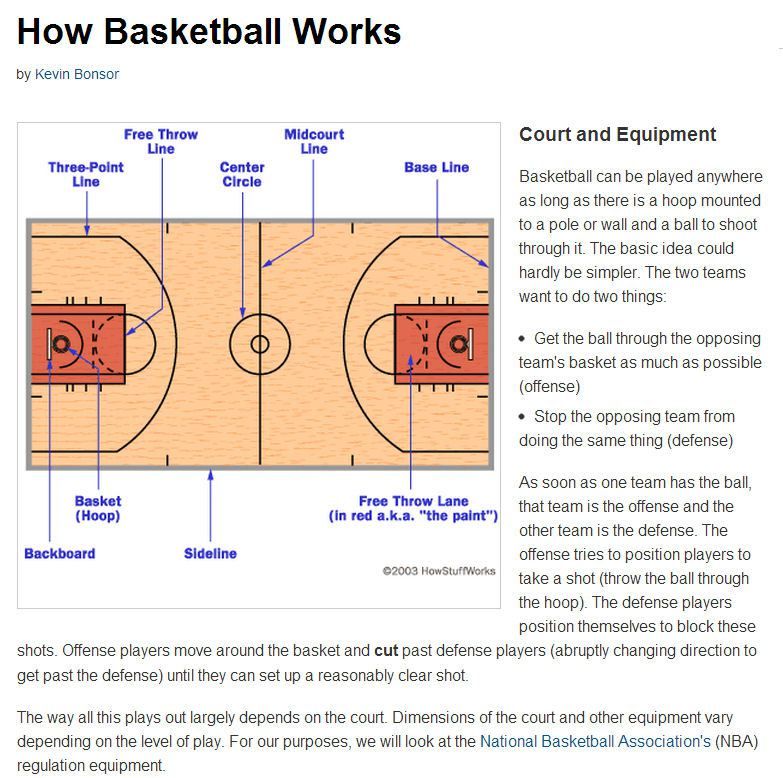
Furthermore, X2 could step back from the corner trap position towards the mid-post extended area. From that point, if X3 makes a pivot pass out of the trap towards 2 on the right side wing, X2 would be able to closeout to contest the jump shot or slow down dribble penetration, shown with the gray arrow.
Also, if 4 cuts down to the left side corner and received the drift pass out of the trap from 3, then X4 would have to quickly sprint to closeout and contest the potential jump shot, also shown with the gray arrow.
Better Basketball | Creating the Perfect Trap
One of the toughest things to teach young players is effectively trapping the basketball without committing a foul. Trapping not only takes athleticism and skill, but it also requires a tremendous amount of self-discipline.
While there are several reasons why you may decide to trap, I think we can all agree the main purpose is to force turnovers. (Through deflections, errant passes, and 5 / 10 second counts)
Before I go into the technique of trapping the basketball, lets discuss the places on the court where traps are most effective. This is simple to teach, it is anywhere on the court where you can use two end/sidelines as defenders.
This is simple to teach, it is anywhere on the court where you can use two end/sidelines as defenders.
- Both corners in the Back Court (aka “Coffin Corner”)
- Half-Court Corners in Front Court
- Baseline Corners in Front Court (I highlighted these in green as these are not always a must trap, all dependent on position/balance of floor.
Now lets go through the technique/teaching points of trapping.
- Create a Wall: One of the most important factors in trapping is preventing a split by a step/dribble through. This is not done with arms/hands, it is done by having the trappers slightly overlap their feet and almost interlock their legs like a wall. This also forces the trappers hips in tighter and closes that gap.
- Arms Up / Hands Up: When you are first teaching young players how to properly trap, I think the most important piece to teach them is how NOT to foul. Too often players start pushing and slapping with their hands, resulting in a foul and making the trap ineffective.
 One way to remedy this issue is to teach never to break your arms; meaning do not break (bend) your elbows and do not break your plane (reach over the offensive player). This will create a higher wall in which the offense player must try to pass over or around. I am sure many you of teach to trace the ball, but once the offensive player brings the ball down, the trappers bring their hands down and young players are not self-disciplined enough to not try to reach or grab at the ball. If you create a strong wall up-front, the only direction they should be able to pass the ball is behind them or overtop. If you do a great job hands high, the pass overtop should be a rainbow pass which could result in a steal, but will also give your defensive players more time to recover back to the ball.
One way to remedy this issue is to teach never to break your arms; meaning do not break (bend) your elbows and do not break your plane (reach over the offensive player). This will create a higher wall in which the offense player must try to pass over or around. I am sure many you of teach to trace the ball, but once the offensive player brings the ball down, the trappers bring their hands down and young players are not self-disciplined enough to not try to reach or grab at the ball. If you create a strong wall up-front, the only direction they should be able to pass the ball is behind them or overtop. If you do a great job hands high, the pass overtop should be a rainbow pass which could result in a steal, but will also give your defensive players more time to recover back to the ball. - Close the Wall:Adding to point #2, if the offensive player ever takes the ball over their head, your trappers should walk up under the offensive player.What do I mean by walking up? Have your trappers move closer to the offense player with their body(s) keeping their arms/hands up.
 This will make the offensive player feel extremely uncomfortably and off-balance and make it make hard to make a strong pass out. However, it is important that once you meet the offensive players body you stop walking so the official cannot call a foul.It is important that throughout the entire trap, your trappers keep their knees slightly bent in an athletic position. Standing straight up will inevitably result in either a foul or a split every single time.
This will make the offensive player feel extremely uncomfortably and off-balance and make it make hard to make a strong pass out. However, it is important that once you meet the offensive players body you stop walking so the official cannot call a foul.It is important that throughout the entire trap, your trappers keep their knees slightly bent in an athletic position. Standing straight up will inevitably result in either a foul or a split every single time.
I am not going to go into too much detail on when/who to trap and the rotations as that is all dependent on the location of the ball, who has the ball, and location of the other players.
In the case below, X4 ran and jumped the ball and trapped with X1. My philosophy on this is if you have a quick enough X4, they need to have the freedom to decide when they think is the best time to trap and not to trap. Some coaches may prefer to jump with X3 and attempt to steal the pass back to 4, but I prefer to have X3 stay on 3. Most Bigs are not the best handlers, so why force the ball out of their hands? In this case, X4 will sprint back and try to turn 4 at least twice before half-court while X1 and X3 deny their man.
Most Bigs are not the best handlers, so why force the ball out of their hands? In this case, X4 will sprint back and try to turn 4 at least twice before half-court while X1 and X3 deny their man.
While there are numerous drills to practice trapping, this 3-on-3 drill is the best I have seen. (If you have some great drills please feel free to share with).
Place three offensive players around the circle to form a triangle (They are not allowed to move or dribble), place three defensive players inside of that circle; coach has the ball. Once the ball is passed the two closest defenders trap the ball. The third defensive player must play safety and stunt and try to read the passer and steal the pass. The offensive player with the ball can pass to either of the other two offensive players; this also encourages fake a pass / make a pass. The two trappers are trying to deflect any passes out.
You can score this however you want:
- You can put time on the clock and see which team can get the most deflections/force turnovers (switching offense to defense half-way through)
- The player that gets a pass deflected/turnover goes to defense, the player that deflects/steals goes to offense
Throw this into your pre-season work, I guarantee it will increase your defensive efficiency.
10 keys to overcoming pressure - Ukrainian Basketball Federation
Presented by coach Kyle Ohman on January 27, 2016 From: Basketball Coaching.
As the season progresses, you're going to meet teams that are looking for options to speed up your offense with all-court pressure. This can come in the form of personal, zone pressing, or a defensive team that just loves to trap at various points throughout the game. Regardless of the type of defensive pressure you face, you need to have a game plan for your team, and that plan needs to be prepared in practice.
The purpose of this article is to give you a few focus points that will be critical in overcoming pressure. Here are 10 keys to overcoming defensive pressure and chances of success.
Make them pay.
One of the biggest mistakes anti-pressing teams make is automatically dragging the ball forward and rushing to attack every time an opponent has potted the ball. Don't get me wrong, this is a great option sometimes to be used depending on time and count. But, if you have the ability to make the pressing team pay by letting easy balls into their basket, do it!
But, if you have the ability to make the pressing team pay by letting easy balls into their basket, do it!
The best way to get your opponent to stop using pressure is to have them pay for your easy balls. If they take the ball out of their basket every time they press, will that be a punishment for their gambling to intercept the ball? It becomes a punishment for pressure against you if they continue to do so. Make them pay.
Be tough with the ball.
It doesn't matter what your game plan is, as long as the players don't have the ball hard. This means not only holding the ball with strong hands, but it also means being able to operate from a position of strength. Players must, after catching the ball, immediately take the position of a triple threat; this will be the best way they can make the defender pay for hard pressure. Why it needs to be done immediately, because if you don't, the defender will eat up your space and force you to turn in the opposite direction. You must fight for 1.5 meters of space in front of you to the defender each time you receive the ball. This will allow you to turn, step, dribble, or make a direct pass to a teammate without passing the ball in an arc.
You must fight for 1.5 meters of space in front of you to the defender each time you receive the ball. This will allow you to turn, step, dribble, or make a direct pass to a teammate without passing the ball in an arc.
Fake passes (feint).
The defenders of the ball carrier will block the passing lines and try to change the flight of the ball. Thus, one of the biggest tools for penalizing these defenders is a simple but extremely effective passing feint. In pressing, players away from the ball are ready to intercept your pass to a partner.
They read the passer and try to guess where they are going to pass the ball. By imitating the passing of the ball, you will make them react to the feint, and jump in the direction of the feint. This will allow you to pass the ball in the right direction, make a throw or pass. Do a pass feint and then decide what to do next.
Open up.
I've seen way too many games where the point guard has lost ball after ball trying to get the offense going. The fan would put all the blame on the player with the ball. However, this is not always the case. Players without the ball need to do a lot of work to get the ball on the wing to create a goal for the ball carrier. You cannot leave your declarer alone and not help him pass the ball to you when you are open.
The fan would put all the blame on the player with the ball. However, this is not always the case. Players without the ball need to do a lot of work to get the ball on the wing to create a goal for the ball carrier. You cannot leave your declarer alone and not help him pass the ball to you when you are open.
This does not mean dancing back and forth with your protector in an attempt to fool him. Just cross step with your foot in front of the defender's front foot. Get into a position with your back to him, like the centers do in their positions, showing your outstretched hand as the target of the pass, and then meet the ball passed to you. And, if the defender abruptly and hard blocks the passing line towards you, make a back cut to the basket. Nothing softens up a defense quite like scoring easy shots from behind.
Meet every transmission.
It is extremely important that the receiver moves towards the ball and receives it each time with both hands. If you sit back and wait for the ball to come to you, you give the defender more time to block the pass, as well as a better angle to jump and bat. Make it a habit to meet every pass. If a player is trapped, in trouble, you must run up to him and open the transmission line. At this point, you are not concerned with the work of the attack, you are helping your partner pass the ball to prevent a loss. When you catch the ball, look in front of you, maybe you can pass back to an open partner and penalize the defense. Make the defense pay for an overload on one side of the field and the trap.
If you sit back and wait for the ball to come to you, you give the defender more time to block the pass, as well as a better angle to jump and bat. Make it a habit to meet every pass. If a player is trapped, in trouble, you must run up to him and open the transmission line. At this point, you are not concerned with the work of the attack, you are helping your partner pass the ball to prevent a loss. When you catch the ball, look in front of you, maybe you can pass back to an open partner and penalize the defense. Make the defense pay for an overload on one side of the field and the trap.
Harsh jerks.
A great way to make defensive pressure suffer is to rush to the basket and beyond. Reassure the defender and then make a sharp dash to open up and get the ball. If you're playing a certain formation on offense, use a dash to open up, but if you're just playing a continuous offense, then read the defender and make a proper dash. You can distract them by walking away from the ball and then making a sharp dash in front of them, or you can act as if you are trying to get the ball on the flank and make a sharp dash behind your back towards the basket. Regardless of the type of dash you use, it should be explosive. The better your dashes, the more the defense will worry about them, and it will take away from them the desire to put constant pressure on you.
Regardless of the type of dash you use, it should be explosive. The better your dashes, the more the defense will worry about them, and it will take away from them the desire to put constant pressure on you.
Play at your own pace.
Pressure protection designed primarily to do one thing, make you hurry, hurry. By accelerating you, they force you to be sloppy with the ball and shoot quickly with a low percentage of hitting. It's important that you play at your speed and don't let aggressive, hard defense make your players lose control.
Much of this falls on declarers. They need to be able to control the flow of the game and know how and when they have to make the defense pay by being much more aggressive and when and how to organize the offense.
Avoid Dangerous Areas.
When pressing or trapping, there are places on the field that you must avoid at all costs. These areas are danger zones and really increase the chances of losing the ball.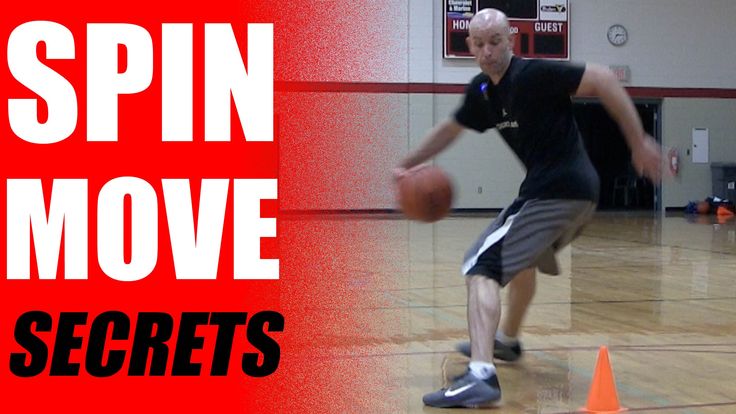 One of these areas is the corners of the site. Here are a few examples where, when pressing, getting into the corner with the ball is very dangerous.
One of these areas is the corners of the site. Here are a few examples where, when pressing, getting into the corner with the ball is very dangerous.
• Corners: It is important that you hit the corner as little as possible with the ball. The sideline and endline act as two additional defenders.
- On a throw-in: Make sure you get the ball no lower than the free throw line and you have room to get the ball off the end line or worse, in a deep corner.
- Passing the ball halfway: Never pass the ball to a teammate who has just crossed the center line or is standing in the corner. The middle line immediately becomes the second defender.
- Offensive corners: Depending on the type of defense you're playing against, these corners aren't always that dangerous. However, be on the lookout for some zone defenses that anytime the ball is in a corner will trap. So make sure you know about it.
Another hazard occurs during passes with the ball. Do not rush to break the pressure with the help of dribbling, and then get into trouble. You, as the declarer, must recognize potential trapping areas and areas that are too dangerous to dribble. A great move to avoid situations like this is reverse dribbling.
You, as the declarer, must recognize potential trapping areas and areas that are too dangerous to dribble. A great move to avoid situations like this is reverse dribbling.
Exhaust valve
When you pass the ball against zone pressing to the opponent's half, you always want one of your players behind the ball. This player is an exhaust valve and is going to be there to handle emergencies and be able to give him a quick reverse pass.
Obviously you always have to think about how to move the ball faster down the court because you have a limited number of seconds to get the ball across half the court, but the release valve will actually help with this because there is always the possibility of a reverse pass and changing the side of the ball on the court.
Shot quality
If you're shooting fast with a low hitting percentage, a tough defense doesn't even need to steal one ball to complete their goal and hit you. It is of paramount importance that you make quality throws on every possession. Don't let yourself move the game up and down with wild throws. You have to make the defense pay for the pressure by making well-prepared shots without resistance.
Don't let yourself move the game up and down with wild throws. You have to make the defense pay for the pressure by making well-prepared shots without resistance.
In his article, Kyle Ohman seems to be talking more to the players, helping them make the right decisions when dealing with pressure. But, in my opinion, this is a lot of information for coaches on how to train players to overcome any of the pressure, both personal and zone pressure.
Good luck to you!
V. Melnichuk, translated 04.02.2016
Attack against zone pressing | Basketball
Before talking about offense against different types of zone pressing, remember that zone pressing:
1) is a psychological attempt to disrupt the habitual interactions of the attackers;
2) is itself an offense aimed at intercepting the ball and "freezing" the fast break;
3) is used when the team consists of players who play well in defense, as well as small teams against a tall and less coordinated opponent;
4) is used to unbalance an opponent and also to destroy his offense by provoking cross, cross or long passes, regardless of whether one or two players throw the ball into the frontcourt;
5) uses a group tackle of the ball, which reduces the number of directions of possible passes for the ball carrier and nullifies his ability to dribble;
6) leads to errors in attackers;
7) forces the opponent to change the usual combinations.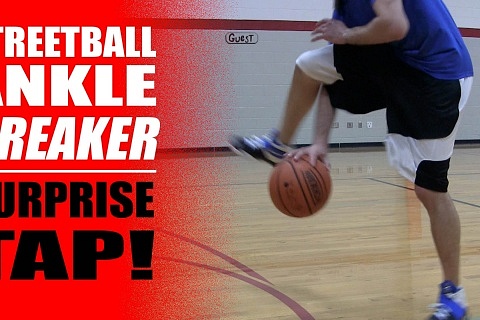
Zone pressing is a great late game defense, especially when the winning opponent is only trying to keep the score. The zone pressure defense imposes its pace of play and allows for calculated risk, forcing the opponent to rush.
The following considerations should be kept in mind when organizing a team offense against zone pressing. The team must avoid passing the ball to the touchlines. Passes to the corner and to the sidelines are performed only in extreme cases. From this point of view, it is sometimes preferable to go for the threat of a dropped ball. When the defenders double-attack the player in possession of the ball at the touchline, the touchline becomes the third defender. Through the center, you can quickly and safely deliver the ball to the frontcourt. After that, the back row players quickly move to the frontcourt to be able to provide assistance to their forwards and the post player.
If a dribbler is attacked by two defenders, he should not turn his back on the opponent's basket in his backcourt. The attacker must anticipate the possibility of a group attack on the ball, have an overview of the entire court at any time of the game and know the direction of the kickback if necessary.
The attacker must anticipate the possibility of a group attack on the ball, have an overview of the entire court at any time of the game and know the direction of the kickback if necessary.
If an attacker dribbles past a defender and the defender stays behind, the ball should be immediately pushed further or transferred to the other hand so that the defender cannot kick it from behind. Players in possession of the ball should always expect an attack from behind or from the blind side when they are over the first line of zone pressure.
After a goal is scored, it is important to get it into play quickly before the opponent's defense has time to form up. The nearest player must grab the ball before it touches the floor, jump over the end line and pass to a partner.
Players must move towards the basket. With a group attack on the ball carrier, a good situation is created for developing a fast break.
It is very difficult to explain to a player at what point he should pass the ball in group tackle attempts. He can control the ball until he is attacked, but when the attack starts, he must pass the ball as early as possible.
He can control the ball until he is attacked, but when the attack starts, he must pass the ball as early as possible.
Offense against zone pressing needs a number of free players. It is important that one player is always behind the teammate in possession of the ball for safety. The ball should always be passed to the most technical player. If an attacker or post is in possession of the ball, they must not lose sight of their more technical partners. Conversely, technical players always go out to meet the ball. They are generally less likely to make a mistake.
Players usually walk away from the defender after making a pass. All players must fill the fast break lanes when the ball penetrates the first line of zone pressing.
When playing against zone pressing, remember that 10 seconds is long enough to get the ball into the frontcourt and don't be afraid to break the 10 second rule. In training, it's a good idea to slowly try out all offensive interactions against zone pressing first, discussing each position, its possibilities, and variations.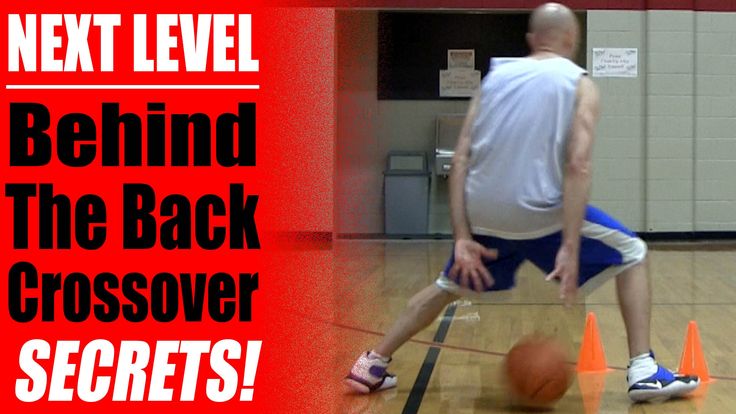 Players then play the main interactions at a medium speed. Finally, they must overcome the resistance of defenders who stand still, then move slowly and increase their speed, but do not play with their hands.
Players then play the main interactions at a medium speed. Finally, they must overcome the resistance of defenders who stand still, then move slowly and increase their speed, but do not play with their hands.
To gain confidence, players attack weak defenders first. At the same time, exercises are used that develop the ability to see the field, the technique of possession of the ball in motion and the tactics of beating a numerically superior opponent. Players must be able to recognize the defense they are playing against and act accordingly. Once forwards are good at playing against zone pressing and performing basic maneuvers with ease and calculation, a coach can use strong defenders in practice to build stamina and confidence in players. It is also useful to prohibit attackers in training from using dribbling when overcoming zone pressure. In addition, special time should be set aside to improve controlled dribbling (hitting the ball in the direction of players preparing for a group tackle and fast passing).
Players should be interested in the details of the game and be focused. They need to know how, where and why their offense works against zone pressure. It is advisable to examine players, especially those who make mistakes, because mistakes in these cases lead the opponent directly to the basket. The mistake must be corrected immediately or the player must be replaced. A player should never cross pass unless he is 100% sure of success.
It is very easy for two players to attack the ball carrier when he has completed the dribble, so the dribble must be used purposefully. Skilled players dribble in the middle of the court. Players must go out towards the passes of the ball. Before making a pass, you need to be sure that the ball is controlled securely. Some players try to catch and pass the ball in one motion, rushing to get it forward. This is a disastrous path. Distracting activities before going to receive the ball are mandatory for all players.
Offensive against zone pressure should break the first line of defense.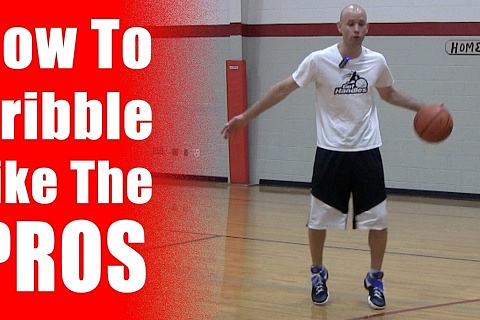 In this case, the player quickly comes forward from behind the back of the first line defender and receives the ball. After the ball is behind the backs of the front row, point guards rush into the frontcourt to get the ball back and quickly deliver it to a position convenient for shooting. Against zone pressing, you need an aggressive attack. This uses a dribble towards defenders preparing for a group tackle with their heads up. When defenders approach, premeditated actions give an advantage to the remaining free partner. In the backcourt, you can pass the ball back. The attacker must always be followed by a partner. If the ball carrier passes back, he steps back and plays on the back of the player who received the ball, or stays behind the defenders in front of a teammate with the ball, taking a position at an angle to him, ready to receive a fast pass.
In this case, the player quickly comes forward from behind the back of the first line defender and receives the ball. After the ball is behind the backs of the front row, point guards rush into the frontcourt to get the ball back and quickly deliver it to a position convenient for shooting. Against zone pressing, you need an aggressive attack. This uses a dribble towards defenders preparing for a group tackle with their heads up. When defenders approach, premeditated actions give an advantage to the remaining free partner. In the backcourt, you can pass the ball back. The attacker must always be followed by a partner. If the ball carrier passes back, he steps back and plays on the back of the player who received the ball, or stays behind the defenders in front of a teammate with the ball, taking a position at an angle to him, ready to receive a fast pass.
Players must be prepared to face zone pressure at all times, especially after minute breaks or substitutions. They also need to be ready to press when they are in the lead.
There are three options for passing offensively against zone pressing: 1) back to the follower, 2) to a stipulated forward position in line of sight of the ball carrier, and 3) between two defenders attacking the ball carrier to a teammate, moving behind them.
A long diagonal pass is possible when the player receiving the ball can get into good shooting position without active opposition. This means that the attacker must control the position of all five defenders before making such a pass. In exceptional cases, a two-handed pass may be made over the head of a defender to the exit to a teammate who is making a dash from the ball. But you should never use hinged gears.
It is important to remember the following points. Coaches will prefer a dropped ball to situations where a player passes the ball at random. A player may dribble as long as there is no threat of a group tackle, but his head must be up. Do not try to dribble until there is room in front of the player to dribble, and once he has started to dribble, he must not stop aimlessly. When there is no possibility for a reliable pass, the dribble is used to move the ball forward and pass. It is very important to stretch the defense as wide as possible throughout the court, in accordance with a pre-planned attack. Players should not be grouped in one zone: the formation should be wide.
When there is no possibility for a reliable pass, the dribble is used to move the ball forward and pass. It is very important to stretch the defense as wide as possible throughout the court, in accordance with a pre-planned attack. Players should not be grouped in one zone: the formation should be wide.
If the defense attacks the thrower from behind the endline, he may step back, run along the endline or pass the ball to a teammate for a throw-in. In the latter case, the player makes a dash and opens up to receive the ball.
To be sure of success, each player must go out towards the ball if the pass is directed to him, and not stop before receiving the ball. If a player receives the ball with his back to the basket being attacked, he must immediately turn and look forward without starting the dribble. He must pass the ball to an open player and quickly move to the designated area, being sure of the balance of the attack.
If possible, do not deviate from the planned attack plan. Permissible improvisation should be based on the breakthrough of zone pressing.
Permissible improvisation should be based on the breakthrough of zone pressing.
Counteraction to group tackling with dribbling (fig. 196). Player 1, the most technical, puts the ball into play with a pass to player 2 (1). He performs a V-shaped movement and goes to receive the transmission. He uses the dribble to pull defenders 1 and 2 on himself. As soon as they get close, player 2 returns the ball to teammate (2), who time his exit from behind the endline in such a way as to be as close as possible to player 2, but not allow defender 1 intercept the ball. Player 1 dribbles past defender 3, ahead of defender 1's attempt to take part in the attack on the ball carrier again. This is a good maneuver for a team with a strong dribbler.
Diagonal exit (fig. 197). Player 1 passes the ball to player 2 (1). He returns the ball to a partner who dribbles towards the defenders preparing for the group tackle (2). Player 2 dashes diagonally to a position in front of player 1, behind defender 1, so that he is in the team's line of sight. Player 1 immediately passes the ball to player 2 (3). Player 1 should be the most technical player on the team.
Player 1 immediately passes the ball to player 2 (3). Player 1 should be the most technical player on the team.
Breakthrough after transmission (Fig. 198). Player 1, the most technical, throws the ball from behind the endline to player 2 on the edge (1). He returns the ball to the partner (2). Player 1 dribbles towards defenders 1 and 2. As soon as defender 2 starts moving towards him, player 1 quickly passes the ball to player 2 (3) coming along the sideline and breaks between the defenders, receiving a return pass from player 2 (4 ).
Attack in 1-1-2-1 formation against zone pressing (dia. 199). Player 1 behind the end line with the ball, regardless of whether there are an even or odd number of players playing in the first line of defense. Player 2 is located near the free throw line, most often behind defender I, to make it difficult for the defense to navigate. Players 3 and 4 take places near the center line. Player 3 has to pull the player of the first line of defense (in our case, defender 3) towards him. Since player 1 is positioned to the right of the free throw area, defender 4, who is playing deep in the court, is likely to move towards him. Therefore defender 3 must step back to make sure that player 3 does not receive a pass over the first line of defense. Player 3, by his actions, should make defender 3 think more about the safety net than about the attack in the first line of defense. Player 2, the most technical, makes a feint and goes out to meet the ball. Player 1 passes the ball to him (I). After the pass, player 1 enters the court, moving away from player 2. He hits the ball once or twice on the floor, calling defenders 1 and 2, and returns the ball to player 1 (2), who begins to dribble in the direction of the position, abandoned by defender 3. As soon as defender 3 starts moving towards the player with the ball, player 3 must go out to receive the ball. Player I passes the ball to player 3 (3) because defender 4 cannot cross the court to intercept the pass. After the pass, player 1 walks down the center ready to receive the ball.
Since player 1 is positioned to the right of the free throw area, defender 4, who is playing deep in the court, is likely to move towards him. Therefore defender 3 must step back to make sure that player 3 does not receive a pass over the first line of defense. Player 3, by his actions, should make defender 3 think more about the safety net than about the attack in the first line of defense. Player 2, the most technical, makes a feint and goes out to meet the ball. Player 1 passes the ball to him (I). After the pass, player 1 enters the court, moving away from player 2. He hits the ball once or twice on the floor, calling defenders 1 and 2, and returns the ball to player 1 (2), who begins to dribble in the direction of the position, abandoned by defender 3. As soon as defender 3 starts moving towards the player with the ball, player 3 must go out to receive the ball. Player I passes the ball to player 3 (3) because defender 4 cannot cross the court to intercept the pass. After the pass, player 1 walks down the center ready to receive the ball. Without dribbling, player 3 passes the ball to player 2 (4), who breaks between defenders 1 and 2. Player 3 must be careful when passing, watching for defender 4 to intercept, but since the pass is backwards (player 2 is behind player 3), it is usually quite reliable. Player 1 or 2 crosses the center line with a dribble, developing a fast break attack.
Without dribbling, player 3 passes the ball to player 2 (4), who breaks between defenders 1 and 2. Player 3 must be careful when passing, watching for defender 4 to intercept, but since the pass is backwards (player 2 is behind player 3), it is usually quite reliable. Player 1 or 2 crosses the center line with a dribble, developing a fast break attack.
Offensive in a 1-1-2-1 formation against zone pressing with an even number of defenders in the first line of defense (fig. 200). Player 2 is in the middle. Player I passes the ball to Player 2, who takes a short dribble and returns the ball to his partner. Player 1 dribbles quickly to the right, where the defense pushes him. When defenders 4 and 2 start the group tackle, player 2 breaks through the center of the court, receiving a return pass from player 1 (1). If defender 2 actively interferes with this pass, player 1 may pass the ball to player 4 (2), who takes a step towards the ball after defender 4 moves to the group tackle. Player 2 continues down the center receiving the ball from player 4.
Player 2 continues down the center receiving the ball from player 4.
Eight attack against zone pressure from a 1-2-1-1 formation (dia. 201). This is a rarely used and hardly mentioned offense against zone pressing. However, it is a simple and effective way to get the ball into the frontcourt against any form of zone pressing. The player simply passes the ball to a partner and passes behind him while the partner sends the ball to a third player. The first player again receives the ball from the third, coming out towards the pass. Player 4 must always move away from the first pass. Player 1 passes the ball to player 2 (1) and passes behind him. Player 2 dribbles to the left, calling defenders 1 and 2, and passes the ball to player 3 (2). Player 2 passes behind Player 3. He knows that Player 1, the first passing in the eight, will go from right to left in his direction. Player 3 dribbles and makes a third pass to player 1 (3) avoiding the trap of defenders 1 and 3.